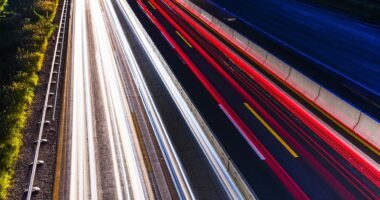Special to 1808Delaware
By Jay Knox, One Columbus
Over the next quarter century, the Columbus Region is facing a period of unprecedented growth. We’re expected to reach a population over 3 million by 2050 — a 35% increase, and 800,000 more residents than we had in 2020.
It’s exciting because it has the potential to bring unprecedented prosperity, improve equity and build cultural vitality — if it is managed well. If it isn’t, plenty of U.S. cities, including close peers to Columbus, exemplify what can go wrong when leaders fail to get ahead of growth.
Central Ohio doesn’t plan to be another example. Or, more precisely, is planning not to be.
Columbus residents can look to a place like Austin as a cautionary tale — also a state capital and big university town, long beloved for its laid-back, quirky culture but now overwhelmed by its explosive growth into a tech hub. Housing is in short supply and unaffordable to nearly all but the high salaried; traffic is miserable at times, and public transit isn’t robust enough to help much; public services like utilities, fire, police and parks are strained.
While the Columbus Region undeniably is feeling some growth-related strain today, the area’s projected annual population growth rate of 1-2% remains manageable, and central Ohio governments, businesses, community organizations and educational institutions are already activating. In a textbook example of the Columbus Way, they’re collaborating to create solutions to the problems of growth before they get out of hand.
The effort’s primary facets include housing, transportation/infrastructure and workforce development.
Housing
Currently, Columbus is seeing only one house built for every 2.5 jobs coming online. The city’s housing plan aims to double that, with a strategy on four fronts:
- BUILD twice as much at all price levels — market rate, workforce and affordable.
- INVEST in more affordable housing, boosted by voters’ approval of housing bond packages in 2019 and 2022 totaling $250 million. Funding supports private developments such as Starling Yard — an historic Columbus middle school that once was among the city’s most endangered historic properties and is now being converted into apartments that will be available to those earning between 30% and 80% of the
area median income. - PRESERVE existing affordability by protecting low-income residents from eviction and displacement. Money from the city, Franklin County and state of Ohio support gap funding and down-payment assistance, home repairs and safety maintenance, as well as loans and grants to developers and affordable housing organizations.
- INCLUDE low-income residents and people of color by cultivating economically diverse neighborhoods. A Community Reinvestment Area policy creates incentives for developers to reserve significant proportions of housing units to be affordable.
In addition, Columbus City Council in July approved Zone In Columbus, the first comprehensive overhaul of the city’s zoning code in more than 70 years. It is focused on increasing housing supply by allowing greater density and building height, especially on major transportation corridors, as well as reducing parking requirements and making it easier to get permits.
There is a recognition that the city of Columbus alone cannot meet the region’s housing needs. A Regional Housing Coalition brings local governments, nonprofits and private developers together to devise solutions.
Transportation/Infrastructure
The Central Ohio Transit Authority (COTA) is spearheading LinkUS, a regionwide mobility initiative designed to make it easier for all residents to get to jobs, services and recreational opportunities. Partners include the Franklin County Board of Commissioners, Mid-Ohio Regional Planning Commission, the city of Columbus and the Columbus Partnership. While COTA is taking the lead, LinkUS isn’t just for transit riders. Walkable communities and expanded bike trails and sidewalk infrastructure benefit everyone. Moreover, making transit more accessible and efficient means more people will use it, and that means less car congestion on the roads.
Highlights of the plan include:
- Bus service increase of 45%, including Bus Rapid Transit — level and multidoor boarding, off-bus fare collection, traffic signal controls, dedicated traffic lanes and improved stations with amenities.
- More than 500 miles of improved or new sidewalks, bike lanes, trails and crosswalks, allowing residents to more easily connect to transit.
- Additional zones for COTA//Plus on-demand transit service.
Workforce Development
Central Ohio is rich in education, from excellent public school systems and high school career centers to community colleges and universities, all collaborating with employers and governments to offer the training and education to build a growing workforce.
The advent of Intel, which is investing $20 billion to build two semiconductor manufacturing facilities in New Albany, has pumped millions into tech education, starting with a $50 million commitment over the next decade to support semiconductor education and research programs at colleges and universities throughout the state.
Columbus State Community College and other area career institutions, including Central Ohio Technical College and the Career and Technology Education Centers (C-TEC) in Licking County, offer programming from noncredit training to certificate programs to associate degrees and programs designed to segue seamlessly to a four-year college, all aimed at building skills in the industries where they’re needed most. Columbus State also works with employers; the Manufacturing Extension Partnership provides companies with consulting and product development, education and talent acquisition.
At the state level, JobsOhio, Ohio’s private economic development partner, has a Talent Acquisition program equipped to identify companies’ talent challenges and build customized strategies to address them.
All of this collaborative effort — aimed at ensuring that the future central Ohio has homes for every family, a convenient and sustainable transportation system, plentiful parks and recreation opportunities, and the ability to match qualified workers with available jobs — ultimately is an investment in the Region’s quality of life.
Central Ohio’s near future is dynamic, and no one can predict everything that will happen. But the need for housing, infrastructure and workforce solutions won’t catch the Columbus Region by surprise.
Source, Photo: One Columbus










